Hornbill Happenings: Surprises From Nature
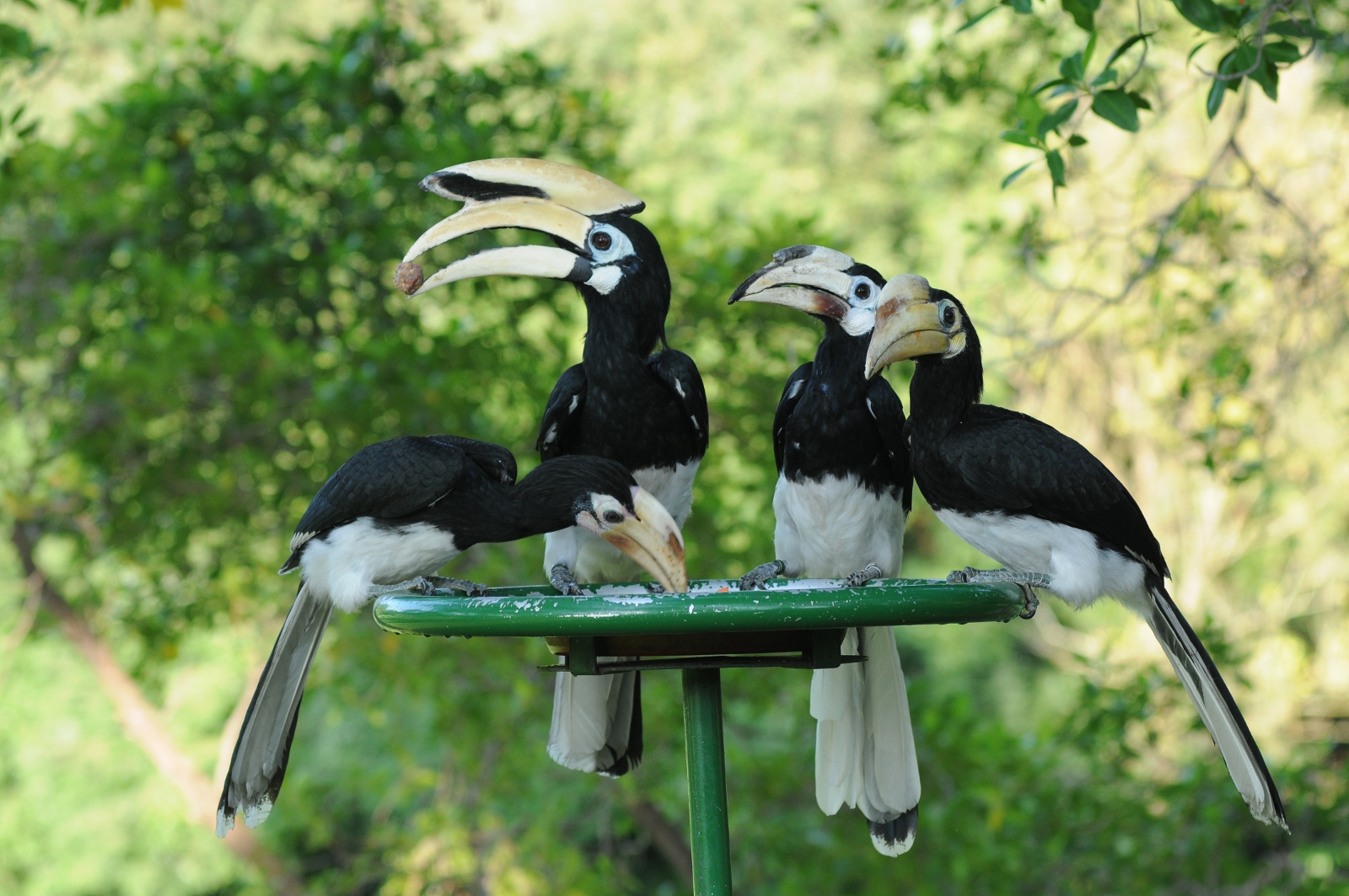 After leaving the artificial nest box, Sada and Lili moved o to a natural tree cavity in Mount Emily. There, Dennis and Emily were born in April 2010.
After leaving the artificial nest box, Sada and Lili moved o to a natural tree cavity in Mount Emily. There, Dennis and Emily were born in April 2010.
I consider myself privileged to encounter biodiversity every day in the course of my work. Even so, I always look forward to my experiences with wildlife – especially with hornbills, which I find fascinating and intriguing. Two years ago, disaster nearly struck along Turnhouse Road near Changi Village, when I came across a baby Oriental Pied Hornbill in the middle of my cycling path. The newly fledged hornbill fluttered its wings as I quickly slammed on the brakes. Unharmed, it took off towards a tree where it was joined by two other adult birds, likely its parents. I shudder to think that I could have accidentally run over the baby hornbill.
| A Hornbill History The Oriental Pied Hornbill is common in Southeast Asia. In the mid-1800s, it disappeared from Singapore, possibly due to hunting and loss of suitable habitat. Years later, in 1994, a pair was recorded from Pulau Ubin. Once thought to be extinct in Singapore, the bird is re-establishing healthy colonies here, thanks to the Singapore Hornbill Project. This project is a research collaboration of NParks, Wildlife Reserves Singapore, Nanyang Technological University and Singapore Avian Conservation Project. There are now about 100 Oriental Pied Hornbills in Singapore. About 60 of them can be found on Pulau Ubin and the nearby Changi Village. |
I had another memorable – and more pleasant – encounter on Good Friday this year. I was cycling along the same road when I heard a loud squawking noise overhead. I saw two Oriental Pied Hornbills on a majestic Shorea heritage tree, with a 3-metre girth. At a height of about 26m, the male – later named Shor – was depositing small fruits into a tree cavity. Sometimes, Shor completely disappeared into the cavity, which must have been rather deep to accommodate a big bird with a wing span of around 1m. He would emerge with bits of plant material in his bill.
Rea, the female hornbill, hung around watchfully. (Perhaps she was supervising Shor in his housekeeping efforts.) She would fly towards the tree, but not enter the cavity. The two hornbills would fly away, then return and repeat the same activities.
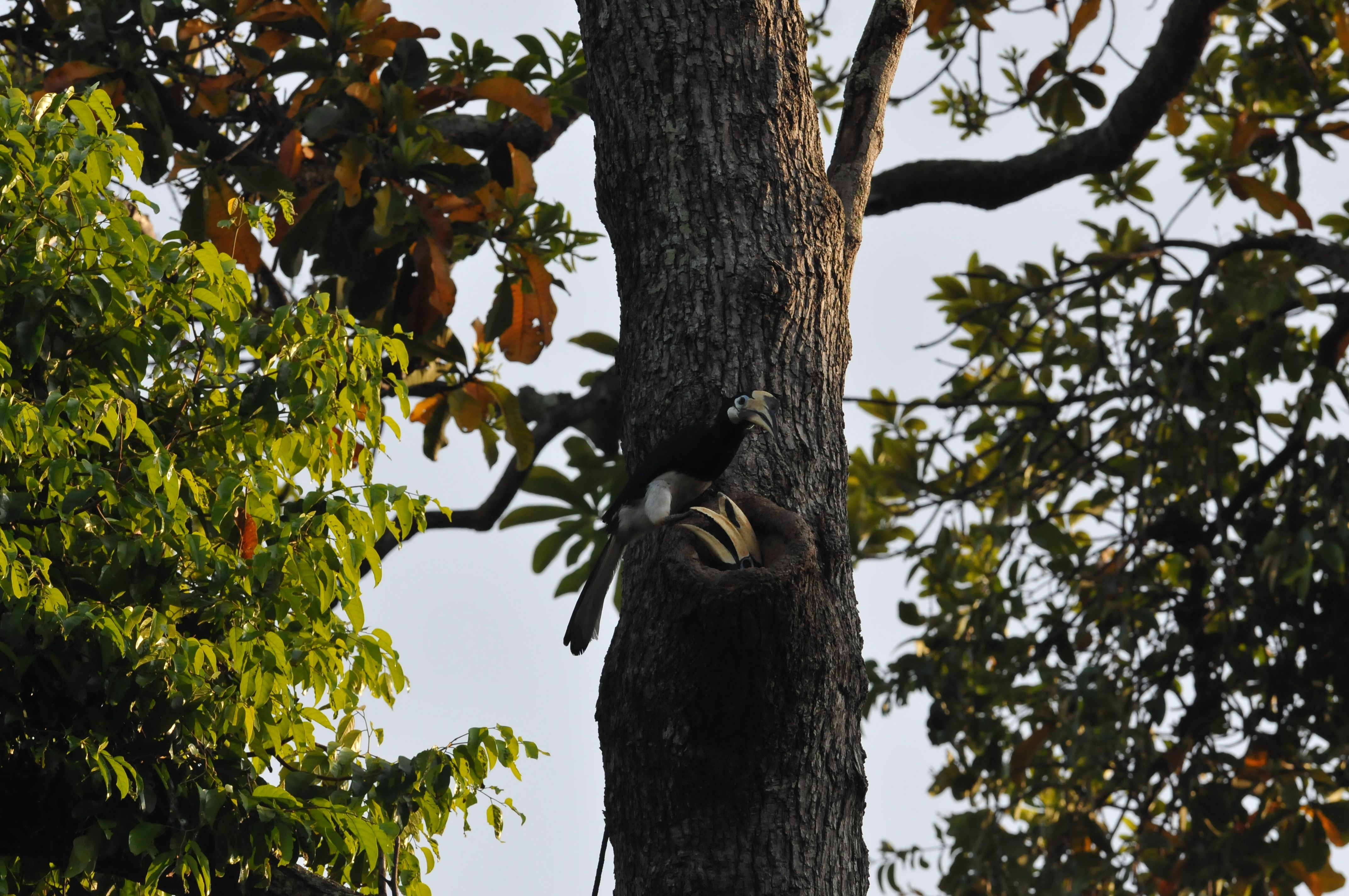 Shor and Rea, at the magnificent old Shorea tree near Changi Village. Rea's bill is peeking out from the tree cavity.
Shor and Rea, at the magnificent old Shorea tree near Changi Village. Rea's bill is peeking out from the tree cavity.
That was the first time I had seen a male hornbill depositing food into a tree cavity for storage, perhaps to attract his mate into the cavity to breed. This seemed unusual as the hornbill breeding season, which is around December to April, was already coming to an end.
Hornbills pair for life and have an unusual breeding behaviour. The female hornbill seals herself into the nest box for 90 days or more when breeding. While confined, she depends on the male to return daily to feed her and the chicks. In this respect, hornbills are good icons for family values such as loyalty and responsibility.
Hornbills generally nest in natural tree holes. In Singapore, where such tree holes are limited in the wild, we provide them with special “housing” in the form of artificial nest boxes. These aim to nudge the hornbills towards mating. (Read more about the nest boxes here and here.)
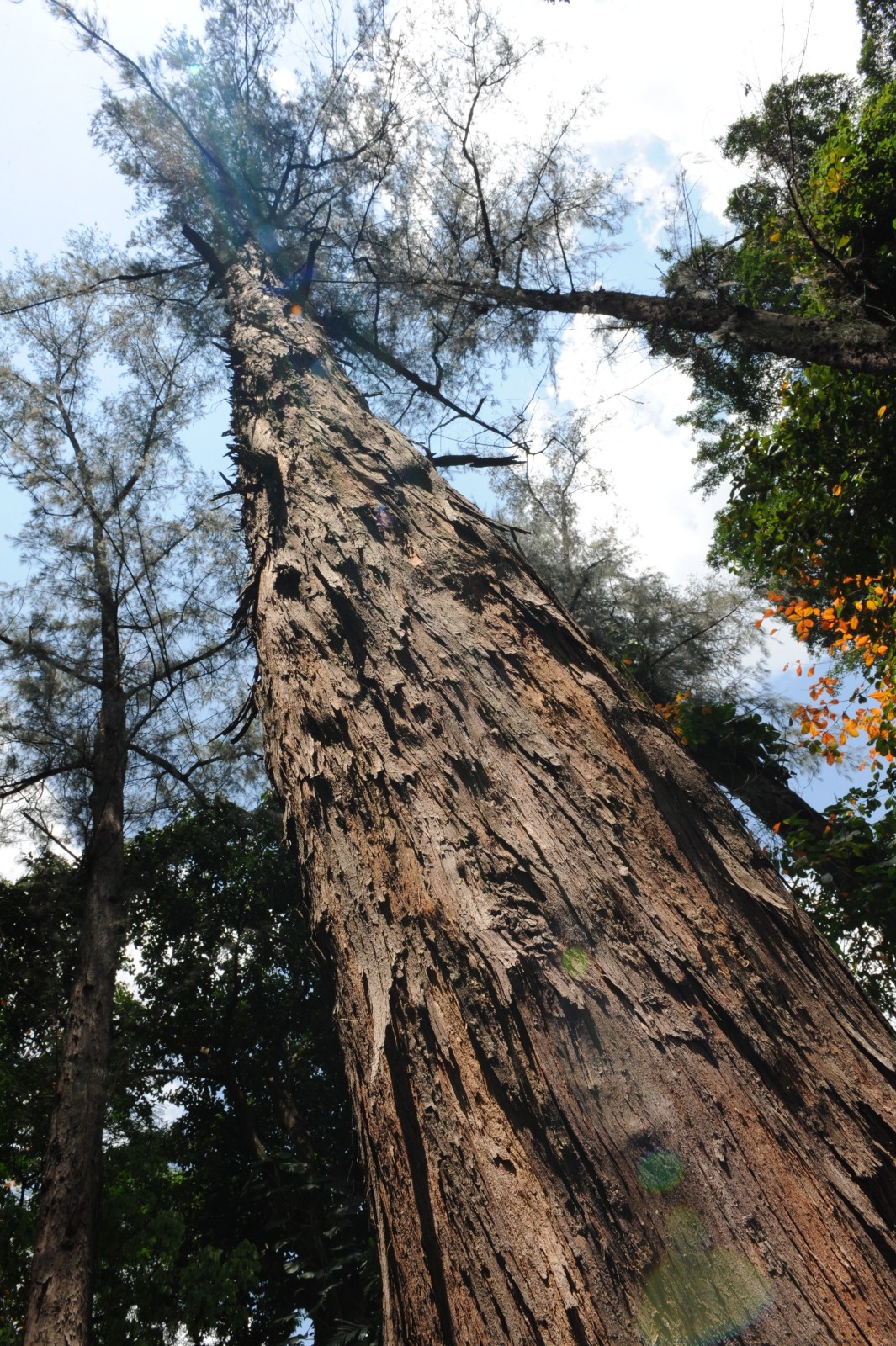
The magnificent tree in Mount Emily, where the hornbill chicks Dennis and Emily were hatched.
In 2008, a pair of captive hornbills was released into the wild for breeding. Up till then, Sada, 21, and Lili, 11 had been in captivity in Jurong Bird Park for several years. We waited with bated breath when they laid their eggs in the nest box in January 2009. A month later, two chicks hatched, and we named them Angel and Bobby. My joy and relief was comparable to that of a newborn baby’s parents!
Lili returned to the nest box a few months later, and a third chick, Christine, hatched in June. With two successful clutches recorded in the same year, Sada and Lili marked a milestone for the research of Oriental Pied Hornbills.
Mother Nature continues to surprise us with her ability to adapt. In Feb 2010, Sada and Lili left the “luxury” of their high-floor, condo-style nest box for a natural tree cavity in Mount Emily. The result was Dennis and Emily, another pair of newborns which fledged in early April 2010. In early May 2011, another chick fledged from the same tree cavity. We named this chick “Freedom”, in alphabetical order after its older siblings.
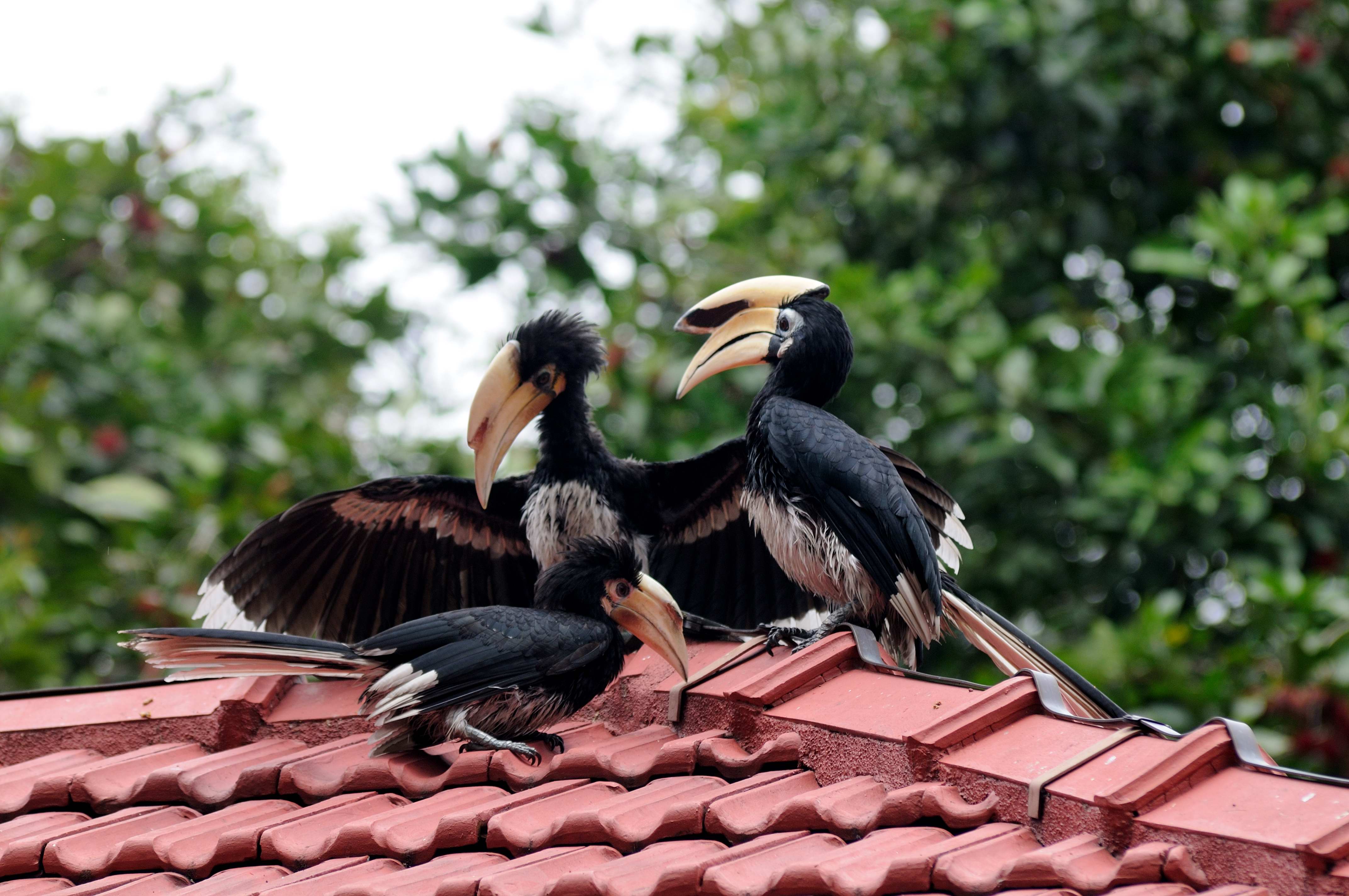 Sada watches protectively over the firstborn chicks, Angel and Bobby.
Sada watches protectively over the firstborn chicks, Angel and Bobby.
Since then, Sada and Lili have not been seen breeding in any of the area’s artificial nest boxes. Their offspring have also left the proverbial nest. Angel and Christine have ventured off to find their own homes and are no longer seen with their parents.
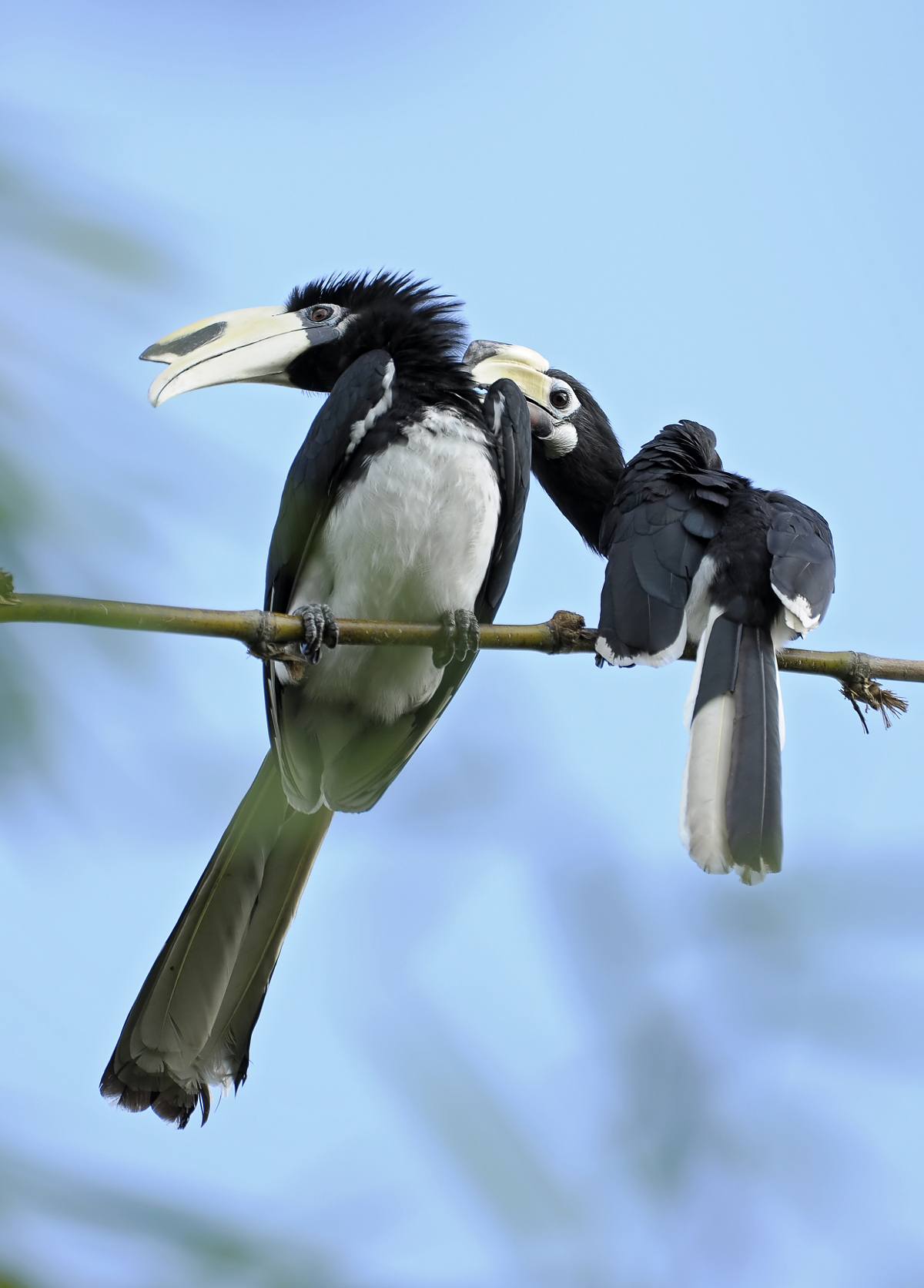 Bobby was relocated to Sungei Buloh, where he is often seen with Serene. She is older, but may one day become his lifelong mate.
Bobby was relocated to Sungei Buloh, where he is often seen with Serene. She is older, but may one day become his lifelong mate.
Bobby was relocated to Sungei Buloh in January 2010, where he is often seen flying with Serene, a female from Pulau Ubin. We hope that when they are of age, they will mate and set up their own family – the next generation of Singapore’s Oriental Pied Hornbills.
By Wong Tuan Wah, as told to Jancy Yeo
Photos by Wong Tuan Wah
Footnote: In 2013, Bobby and Serene had their first clutch of chicks.
Have views or comments on this article? Let us know via this form. If you would like to give us feedback on any other areas relating to our parks and gardens, please submit via https://www.nparks.gov.sg/feedback


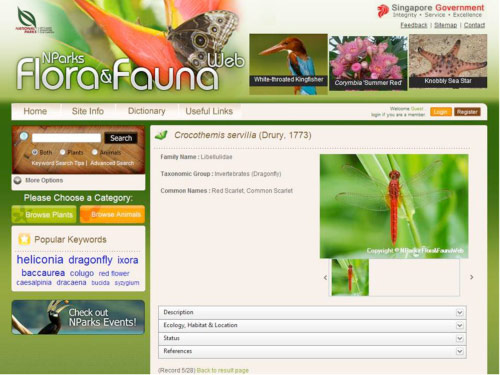
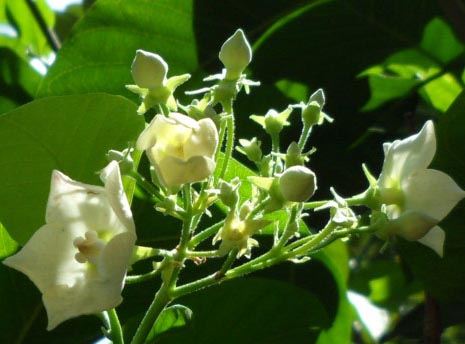

Samar Sen 10/23/2014 10:59:51 AM